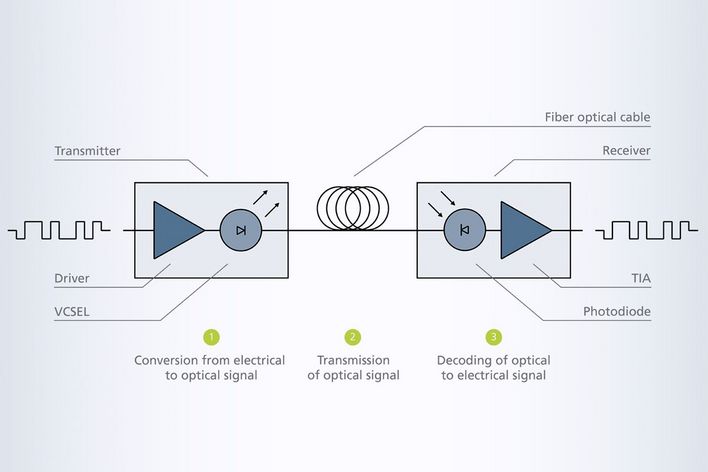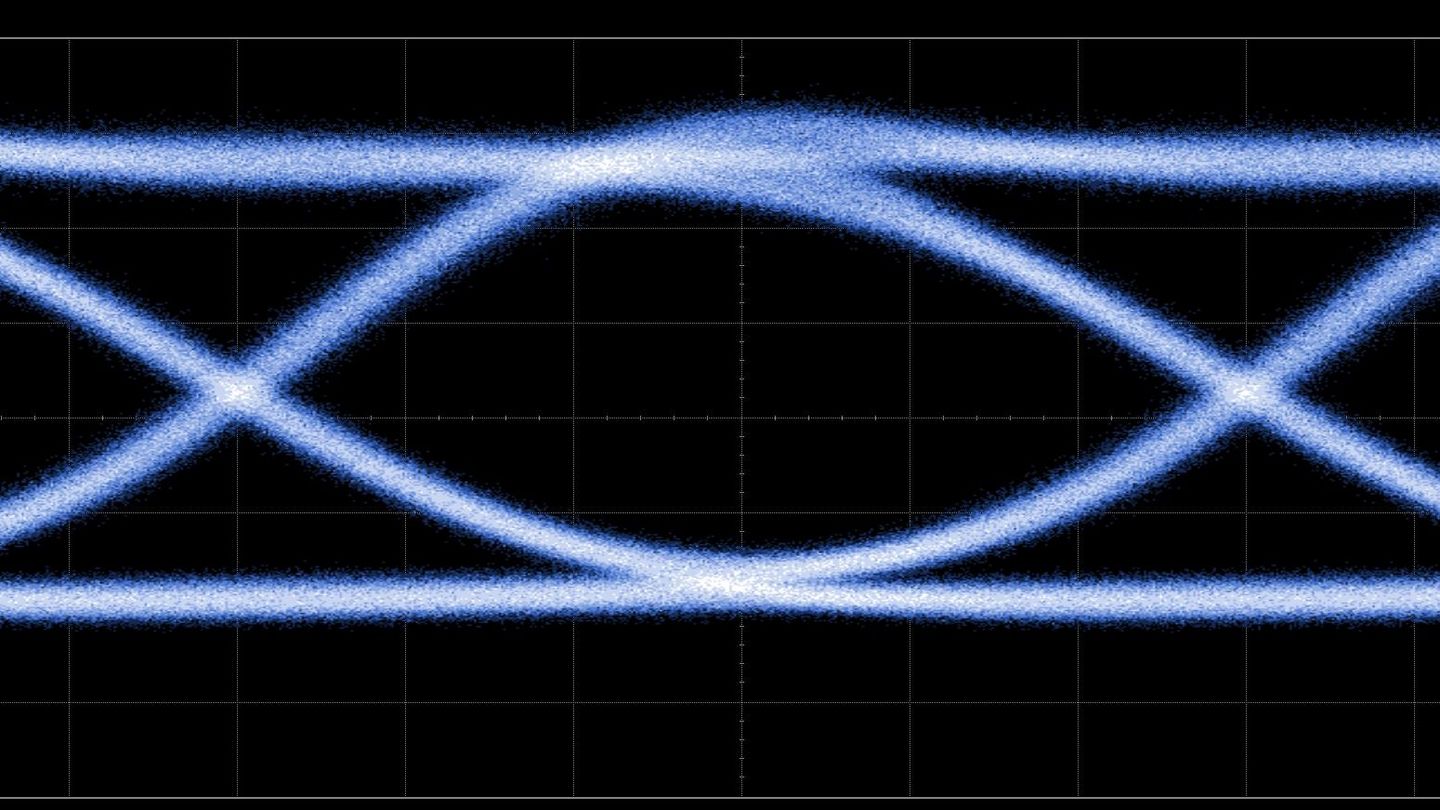A fiber optic communication link is comprised of a transceiver at each end of a fiber cable of a desired length. The transmitter part of the transceiver encodes and transmits the light signal through the fiber optic cable while the receiver part of the transceiver receives the light signal and decodes it into an electrical signal.
For lower data rate, the optical signal is modulated as an NRZ signal but for higher data rate, typically over 25 Gbps, PAM4 modulation is used. The performances of the whole link and its individual components are evaluated based on various parameters such as the optical eye, the bit error rate (BER), small signal and large signal performance. Power dissipation is also a key performance parameter. In addition, the optical communication components are to be compliant to specific standards.








